Summary Structural failure Date 24 January 1961 Survivor 5 | Survivors 5 Registration 58-0187 Fatalities 3 Crew count 8 | |
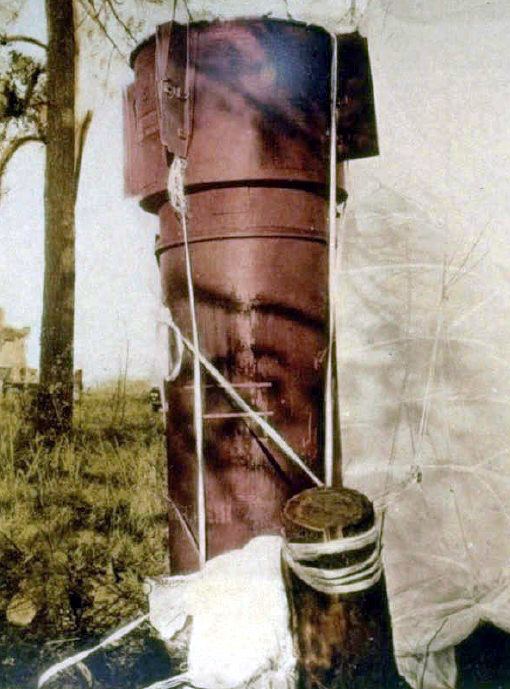 | ||
Destination Seymour Johnson Air Force Base Similar 1961 President Airlines D, Imperial Airlines Flight 201, 1968 Thule Air Base B‑52 crash, ČSA Flight 511, TWA Flight 529 | ||
1961 goldsboro b 52 crash
The 1961 Goldsboro B-52 Crash was an accident that occurred in Goldsboro, North Carolina, on January 24, 1961. A B-52 Stratofortress carrying two 3-4 megaton Mark 39 nuclear bombs broke up in mid-air, dropping its nuclear payload in the process. The pilot in command ordered the crew to eject at 9,000 feet (2,700 m). Five men successfully ejected or bailed out of the aircraft and landed safely. Another ejected but did not survive the landing, and two died in the crash. Information newly declassified in 2013 showed that one of the bombs came very close to detonating.
Contents
- 1961 goldsboro b 52 crash
- Accident
- Bomb recovery
- Consequences to B 52 design
- Later analysis of weapons recovery
- Legacy
- References
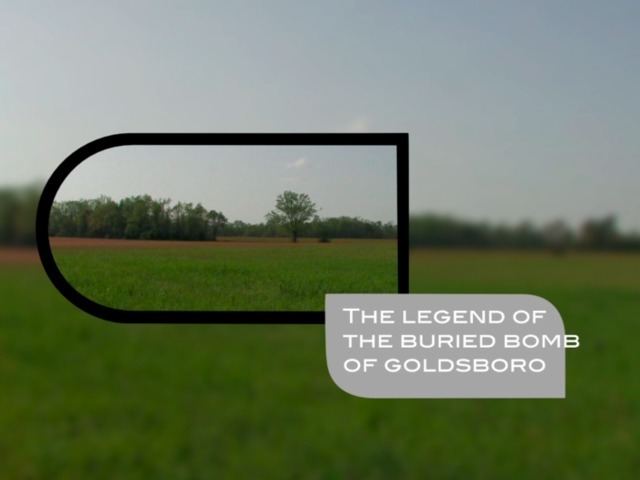
Accident
The aircraft, a B-52G, was based at Seymour Johnson Air Force Base in Goldsboro. Around midnight on January 23–24, 1961, the bomber had a rendezvous with a tanker for aerial refueling. During the hook-up, the tanker crew advised the B-52 aircraft commander, Major Walter Scott Tulloch, that his aircraft had a fuel leak in the right wing. The refueling was aborted, and ground control was notified of the problem. The aircraft was directed to assume a holding pattern off the coast until the majority of fuel was consumed. However, when the B-52 reached its assigned position, the pilot reported that the leak had worsened and that 37,000 pounds (17,000 kg) of fuel had been lost in three minutes. The aircraft was immediately directed to return and land at Seymour Johnson Air Force Base.
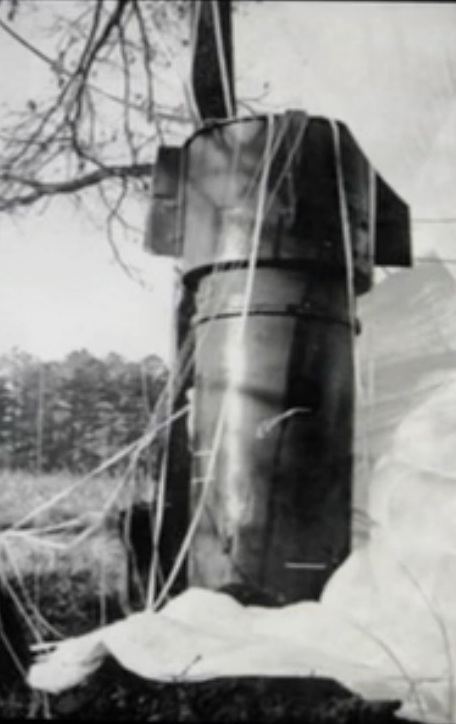
As it descended through 10,000 feet (3,000 m) on its approach to the airfield, the pilots were no longer able to keep the aircraft in trim and lost control of it. The pilot in command ordered the crew to eject, which they did at 9,000 feet (2,700 m). Five men bailed out and landed safely. Another bailed out but did not survive the landing, and two died in the crash. The third pilot of the bomber, Lt. Adam Mattocks, is the only man known to have successfully bailed out of the top hatch of a B-52 without an ejection seat. Although the crew last saw the aircraft intact with its payload of two Mark 39 hydrogen thermonuclear bombs on board, it broke apart before impact, releasing the bombs. The wreckage of the aircraft covered a 2-square-mile (5.2 km2) area of tobacco and cotton farmland at Faro, about 12 miles (19 km) north of Goldsboro.

The two 3-4 megaton MK. 39 nuclear bombs separated from the gyrating aircraft as it broke up between 1,000 and 2,000 feet (300 and 610 m). Three of the four arming mechanisms on one of the bombs activated, causing it to execute many of the steps needed to arm itself, such as charging the firing capacitors and, critically, deployment of a 100-foot-diameter (30 m) retard parachute. The parachute allowed that bomb to hit the ground with little damage.
Bomb recovery
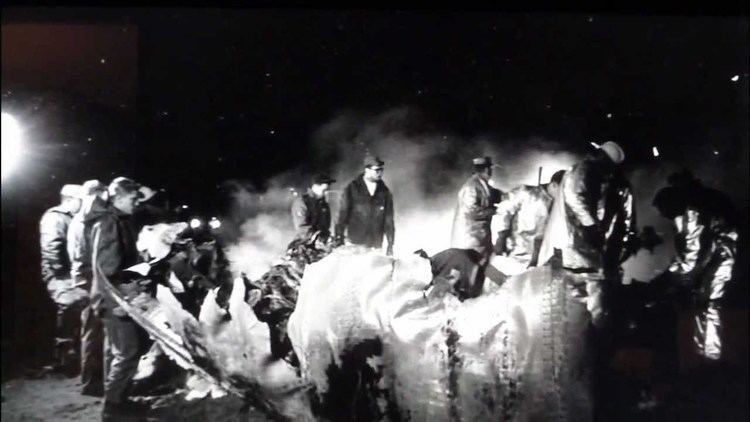
The bomb that descended by parachute was found intact, and standing upright as a result of its parachute being caught in a tree. Lt. Jack Revelle, the bomb disposal expert responsible for disarming the device, stated that the arm/safe switch was still in the safe position, although it had completed the rest of the arming sequence. The Pentagon claimed at the time that there was no chance of an explosion and that two arming mechanisms had not activated. A United States Department of Defense spokesperson stated that the bomb was unarmed and could not explode. Former military analyst Daniel Ellsberg has claimed to have seen highly classified documents indicating that its safe/arm switch was the only one of the six arming devices on the bomb that prevented detonation. In 2013, information released as a result of a Freedom of Information Act request confirmed a single switch out of four (not six) prevented detonation.
The second bomb plunged into a muddy field at around 700 miles per hour (310 m/s) and disintegrated without detonation of its conventional explosives. The tail was discovered about 20 feet (6.1 m) below ground. Pieces of the bomb were recovered. Although the bomb was partially armed when it left the aircraft, an unclosed high-voltage switch had prevented it from fully arming. In 2013, ReVelle recalled the moment the second bomb's switch was found. “Until my death I will never forget hearing my sergeant say, 'Lieutenant, we found the arm/safe switch.' And I said, 'Great.' He said, 'Not great. It’s on arm.'”
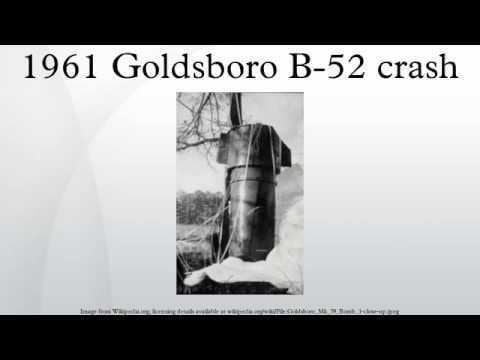
Excavation of the second bomb was abandoned as a result of uncontrollable ground-water flooding. Most of the thermonuclear stage, containing uranium and plutonium, was left in place, but the "pit" or core of the bomb had been dislodged and was removed. The United States Army Corps of Engineers purchased a 400 feet (120 m) circular easement over the buried component. The University of North Carolina at Chapel Hill determined the buried depth of the secondary component to be 180 feet (55 m), plus or minus 10 feet (3.0 m).
Consequences to B-52 design
Wet wings with integral fuel tanks considerably increased the fuel capacity of B-52G and H models, but were found to be experiencing 60% more stress during flight than did the wings of older models. Wings and other areas susceptible to fatigue were modified by 1964 under Boeing engineering change proposal ECP 1050. This was followed by a fuselage skin and longeron replacement (ECP 1185) in 1966, and the B-52 Stability Augmentation and Flight Control program (ECP 1195) in 1967.
Later analysis of weapons recovery
In 2011, Lt. Jack Revelle, the bomb disposal expert responsible for disarming the device, claimed "we came damn close" to a nuclear detonation that would have completely changed much of eastern North Carolina. He also said the size of each bomb was more than 250 times the destructive power of the Hiroshima bomb, large enough to create a 100% kill zone within a radius of 8.5 miles (13.7 km).
In a now-declassified 1969 report, entitled "Goldsboro Revisited", written by Parker F. Jones, a supervisor of nuclear safety at Sandia National Laboratories, Jones said that "one simple, dynamo-technology, low voltage switch stood between the United States and a major catastrophe", and concluded that "The MK 39 Mod 2 bomb did not possess adequate safety for the airborne alert role in the B-52".
Legacy
In July 2012, the state of North Carolina erected a historical road marker in the town of Eureka, 3 miles (4.8 km) north of the crash site, commemorating the crash under the title "Nuclear Mishap." The memorial does not list the names of the three aircrew who died in the accident: Sergeant Francis Roger Barnish (35), Major Eugene Holcombe Richards (42), and Major Eugene Shelton (41).
